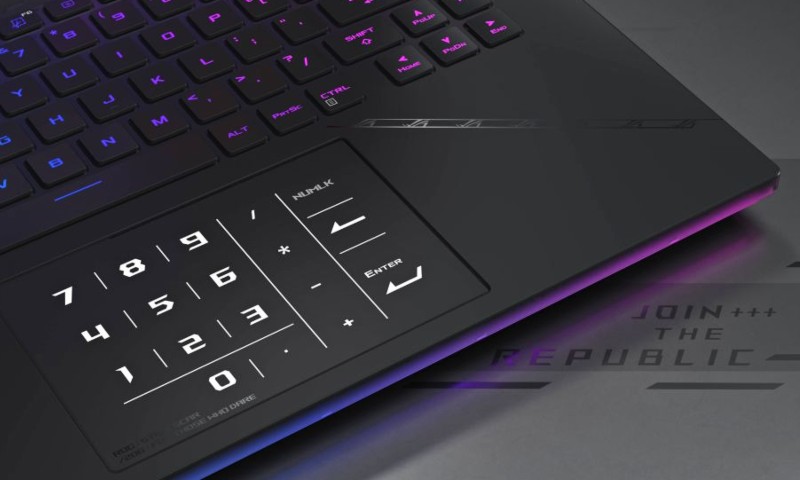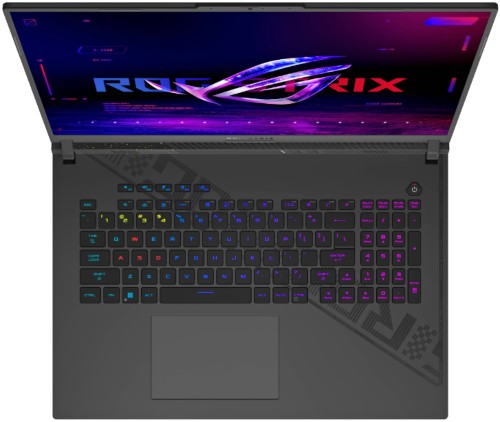Asus has announced the ROG Strix Scar and Strix G, two new gaming laptops. These devices have 16-inch and 18-inch displays and are powered by the latest 13th Gen Intel Core i9 and Nvidia GeForce RTX 4090. These high-performance gaming laptops are not only equipped with the latest powerful hardware components but also feature 16:10 240Hz display panels with a QHD resolution of 2560 x 1600 pixels. They use a MUX Switch powered by Nvidia Advanced Optimus technology to improve frame rate optimization.
Other than the ROG Strix G17 and ROG Strix Scar 17, which are equipped with RTX 40 Series cards and AMD Ryzen 9 7945HX chipsets, Asus seems to make a stand for itself through its high-performance gaming laptops lineup, like the revamped Asus ROG Zephyrus M16 and the powerful Asus ROG Flow X13.
Asus ROG Strix Scar 16 and Scar 18 (2023) Gaming Laptops
The ROG Strix Scar 16 and 18 will be available from Q2 2023 and Q1 2023, respectively. The Scar 16 starts at £3,299 with an i9-13980HX CPU and RTX 4080 GPU, while the Scar 18 version with an i9-13980HX and RTX 4090 will cost £3,399.
From a spec standpoint, it’s hard to imagine a situation where one of these laptops would be insufficient. Both can take a 13th Gen Intel Core i9-13980HX CPU, an Nvidia GeForce RTX 4090 16GB GDDR6 GPU, 64GB DDR5 RAM, and 2TB PCIe 4.0 SSDs.
The main difference between the Strix Scar 16 and Scar 18 is in their displays and dimensions. The Scar 16 has an IPS-level screen with G-SYNC, Dolby Vision, and Pantone certification, 16-inch QHD (2560 x 1600) 240Hz, 3ms, 100% sRGB, and a mini-LED option that covers the full DCI-P3 color space. The Scar 18 features an 18-inch QHD (2560 x 1600) IPS-level screen with G-SYNC 240Hz, 3ms, 100% DCI-P3 and an 18-inch FHD+ (1920 x 1200) IPS-level panel 165Hz, 7ms, 100% sRGB.

Connectivity-wise, you won’t miss a beat as there are all the usual ports, including two USB-A 3.2 Gen 1 ports, Thunderbolt 4 USB-C slot, USB-C 3.2 Gen 2 with DisplayPort 1.4 and Power Delivery, a Gigabit Ethernet connector, an HDMI 2.1 port, and a 3.5mm headphone/audio jack. The other key features include a backlit chiclet-style keyboard with per-key RGB lighting, Touchpad NumberPad (exclusive to the Scar 16), Bluetooth 5.2, WiFi 6E, four speakers with Dolby Atmos and Hi-Res Audio, and a 90Wh battery.
Asus has put a bigger variant of the Flow X16’s full-width heatsink on the Strix Scar 16 and 18, Strix G16, and Strix G18. This heatsink increases surrounding heat dissipation by up to 92.23% compared to 2022 models, and combined with the new vents, allows for more powerful internal components to run at their best thanks to optimal airflow.
Asus ROG Strix G16 and G18 (2023) Gaming Laptops
Besides the Scar lineup, Asus will also release its updated Strix G16 and G18 gaming rigs in the second half of this year. The ROG Strix G16 and G18 both support up to 13th-gen Intel Core i9-13980HX processor, up to 32GB of DDR5 RAM, up to 2TB of PCIe 4.0 SSD, and 175W of TDP with Dynamic Boost from the GeForce RTX 4080 16GB GDDR6 card.
The Asus Strix G16 starts at £1,499 with an RTX 4050 and i5-13450HX, while the G18 will cost £1,799 with an RTX 4060 GPU and AMD R9-7845HX CPU. Compared to the Strix Scar models, these are more affordable but still pack a punch.
Both the G16 and G18 have the same display features as the Rog Strix Scar 18. You can choose between a 16 or 18-inch QHD (2560 x 1600) IPS-level screen with 240Hz refresh rate, 3ms input lag, 100% sRGB, G-SYNC, or FHD+ (1920 x 1200) 165Hz IPS display with 7ms. The G18’s QHD variant, on the other hand, has full support for the DCI-P3 color model.

The ports will be the same as in ROG Strix Scar 2023 notebooks, except for an Ethernet jack, which is limited to RTX 4080 equipped models. Additional features on RTX 40 Series laptops include a 4-Zone and per-key RGB illuminated Chiclet keyboard, Wi-Fi 6E and Bluetooth 5.2, 90Wh battery, and four speakers with Dolby Atmos and Hi-Res Audio, and the models with Geforce RTX 3050 come with 64Wh batteries.
CES 2023 saw multiple manufacturers pushing 16-inch and 18-inch laptops. Are we witnessing an actual shift away from the 15-inch standard, or is this just the latest sizing experiment? Time will tell if anyone wants to carry these beasts around or if they’ll only be permanent desk fixtures that happen to have batteries.

